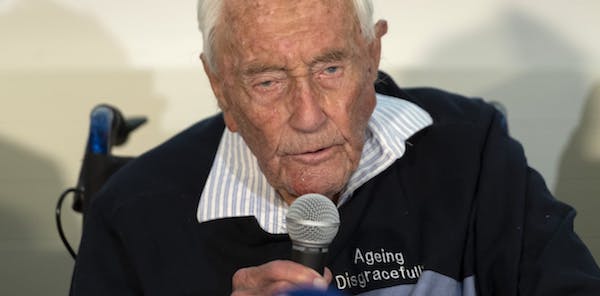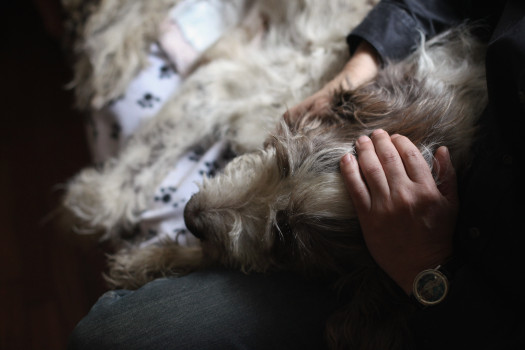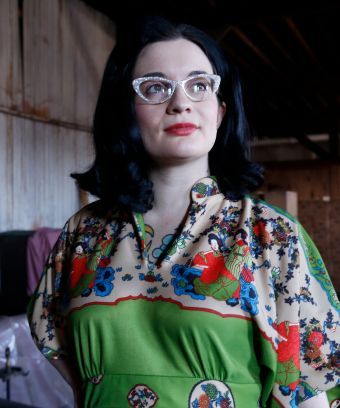
By Kevin Truong
Shoshana Ungerleider is a leading palliative care advocate as well as a practicing physician at California Pacific Medical Center in San Francisco. In her work as an activist and educator on end-of-life issues, she’s been focused on creating a more human-centered approach to how we die. To this end, Ungerleider has started a philanthropic organization dedicated to education about end-of-life issues, launched an annual symposium on the end-of-life experience called End Well, and helped produce documentary films on the subject, including the Oscar-nominated Extremis and End Game, which was released on Netflix earlier this month. The Business Times spoke to her about what’s behind her passion for palliative care and how a better understanding of death is essential to a better health care experience.
As an internist who works in a hospital, how did you first get interested in palliative care?
Sort of the weird thing is that I never set out to be any kind of advocate for end-of-life issues. But really early on in my residency, I experienced so many patients in the ICU who were dying of lung cancer, of liver disease, of end-stage something and I realized that nothing that we were going to do was really going to reverse their age or their underlying medical problems. But nonetheless we were still kind of doing things to them because we could and not because we necessarily should. It turns out that far too many people spend their last moments of life suffering. They’re in pain. They’re hidden away from their loved ones. And to me it’s coming down to the fact that we’re not doing as a job both as health-care providers but also society at large of having honest conversations early and often about what matters most to us.
Are there generational differences in terms of people being open and comfortable about conversations around death?
Millennials are, for whatever reason, really open and honest about mortality and making sure that they get what they want and have some autonomy. There’s a similar thing with baby boomers interestingly, really wanting to have a say and maintain control. There are organizations like Death over Dinner in Seattle, where they kind of helped you curate and facilitate a conversation around the dinner table with friends, family or loved ones. Also, The Dinner Party, which is another group founded by some young women who lost their parents which is more focused on grief, and loss, and creating an open conversation around their table. So it’s fascinating to me just how much innovation is happening around this seemingly very taboo topic.
Many doctors feel that death is ultimately a treatment failure. But have you seen an evolution from the physician and provider side when it comes to end-of-life care?
There’s been, over the last 15 years, a shift in medical education. So people are realizing that teaching doctors how to have hard conversations is really critical. We need to be doing more of it and there needs to be sort of core academic competence models coming out of our national accrediting bodies that haven’t happened yet. But the field of palliative care is brand new. It’s only been a specialty that’s been board certified since 2008. There has been a radical shift in the last 10 years to now being a very much more popular field. They talk about it often and medical students and residents are much more open to the idea that doctors still have a place in healing, even when a cure is no longer an option.
One of your stated goals is to make the end-of-life process more human-centered and less clinical, cold and impersonal. What role is technology playing in that shift?
There’s a few apps out there that are really helping to facilitate advanced care planning, meaning the kinds of documentation and discussion that need to take place to make people’s end of life care preferences known, like Cake out of Boston. There are also a few entities researching the use of virtual reality in terms of both therapeutically helping to treat pain and anxiety, but also for recreational use. So some places in Canada and the UK are specifically using it for patients who are in hospice and want to mark things off their bucket list. So while they can’t travel but they might be able to experience Niagara Falls or go climb Everest virtually.
Are there things that American culture regarding death can learn from other places around the world?
It’s really interesting because everybody always asks if there are countries or societies that do this well, and the answer to that is no. Nobody has figured out the best way to support patients, to support families, to think about caregiving from a civic perspective. The one really interesting case study that I always point to when I talk about this is La Crosse, Wisconsin. It’s a town of about 50,000 people where one leader in the community decided that he was going to make his hometown just like a great place to die. How he went about this was in the mid-2000s he figured out a way to really encourage people to do a lot of advanced directives, so that it became just a commonplace thing. In 2009, something like 95 percent of the people that died (in La Crosse) had filled out an advanced directive. In the United States we have 10,000 baby boomers turning 65 every day. Never in the history of our country will so many people die in such a short time span, so it behooves all of us to start thinking about innovative solutions to caregiving.
So you’re probably the person I’ve talked to who’s thought about these issues the most, how has your perception of your death had changed?
Something sacred is happening. You get to see a very intimate window into someone’s life and really the mystery of what binds us together as human beings. For me, being reminded of my mortality makes my life sweeter. It’s more rich when you know that one day it will end.
Complete Article ↪HERE↩!









